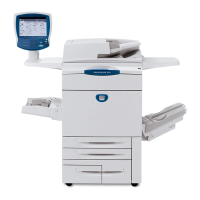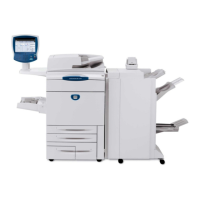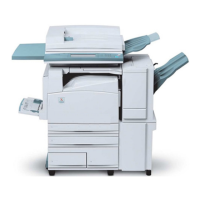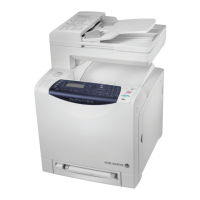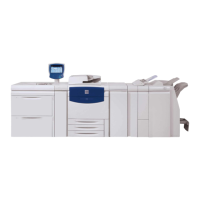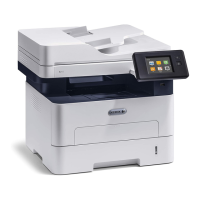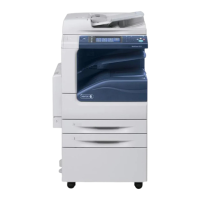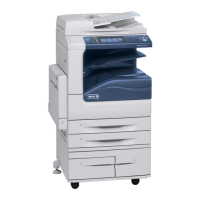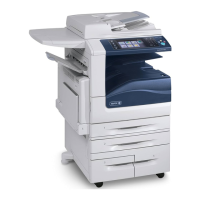1/05
10-110
DocuColor 12/DCCS50
Photoreceptor Drum
Reissue
Principles of Operation
Photoreceptor Drum
This machine uses the “black writing” or Discharge Area Development (DAD) system for
exposing and charging the Photoreceptor Drum. With black writing, a high negative charge is
placed uniformly on the drum and forms the image background. The Photoreceptor drum is
discharged in those areas written by the ROS. The developer is also highly charged negatively
and is only attracted to the more discharged areas. Therefore, if there is an image writing fail-
ure, such as a ROS failure, the result will be blank prints.
Figure 1 Black Writing Xerographics Process
The black writing steps used on this rotat
ing Phot
oreceptor Drum are as follows:
1. Charging th
e Drum (see: Charge Corotron)
2. Exposing the im
age onto the Drum with the Laser (see: Imaging section)
3. Developing the i
mage on the Drum (see: Development)
4. Transferring the im
age to the IBT (see: Toner Transfer Overview)
5. Cleaning the
Drum and IBT Belt (see: Cleaning Systems)
Photoreceptor Drum
This machine uses a STX Organic Photoreceptor Drum. The multiple layered, organic coated
aluminum drum is 84 mm in diameter. The layers on the Photoreceptor Drum are:
• The bottom layer is called a Blocking Layer and forms the interface to the grounding alu-
minum layer.
• The middle layer is called the Charge Generation Layer and has the capability of generat-
ing charges in the presence of light.
• The top layer is called the Charge Transport Layer and
it
transports charges from the sur-
face.
NOTE: The top STX organic layer is more sensitive to light t
han some other Photoreceptor
Drums. When removing from the machine, cover the Drum with the black plastic bag, which is
located in the closed compartment of Tray 1. Do not leave the Drum exposed to direct ambient
light for more than one minute at 1000 lux. If this time limit is exceeded, the drum becomes
desensitized and unusable. Unlike other Photoreceptor Drums, this unit cannot be refreshed
by placing it in a dark environment. It must be replaced.
For information on cleaning the Photoreceptor Drum, refer to C
leaning Sy
stems
Photoreceptor grounding
The Photoreceptor Drum must be electrically grounded in order to function properly. The alumi-
num substrate of the Photoreceptor Drum
is electrically common with the Drum Shaft. The
Drum Shaft is grounded through the Photoreceptor CRU, which is itself grounded to the
machine through a connector pin.
Drum Drive
The Photoreceptor Drum is driven by a 24 VDC brushless DC motor. This motor also drives the
IBT. In this manner, synchronization between the Drum and IBT Belt is easier to maintain for
the image transfer process.
A 9.38 pound (3.5 kilogram) flywheel is installed on t
he
IBT Drive Roll Shaft to prevent fluctua-
tions in speed that would impact image quality.
manuals4you.commanuals4you.com
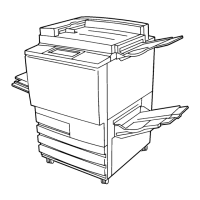
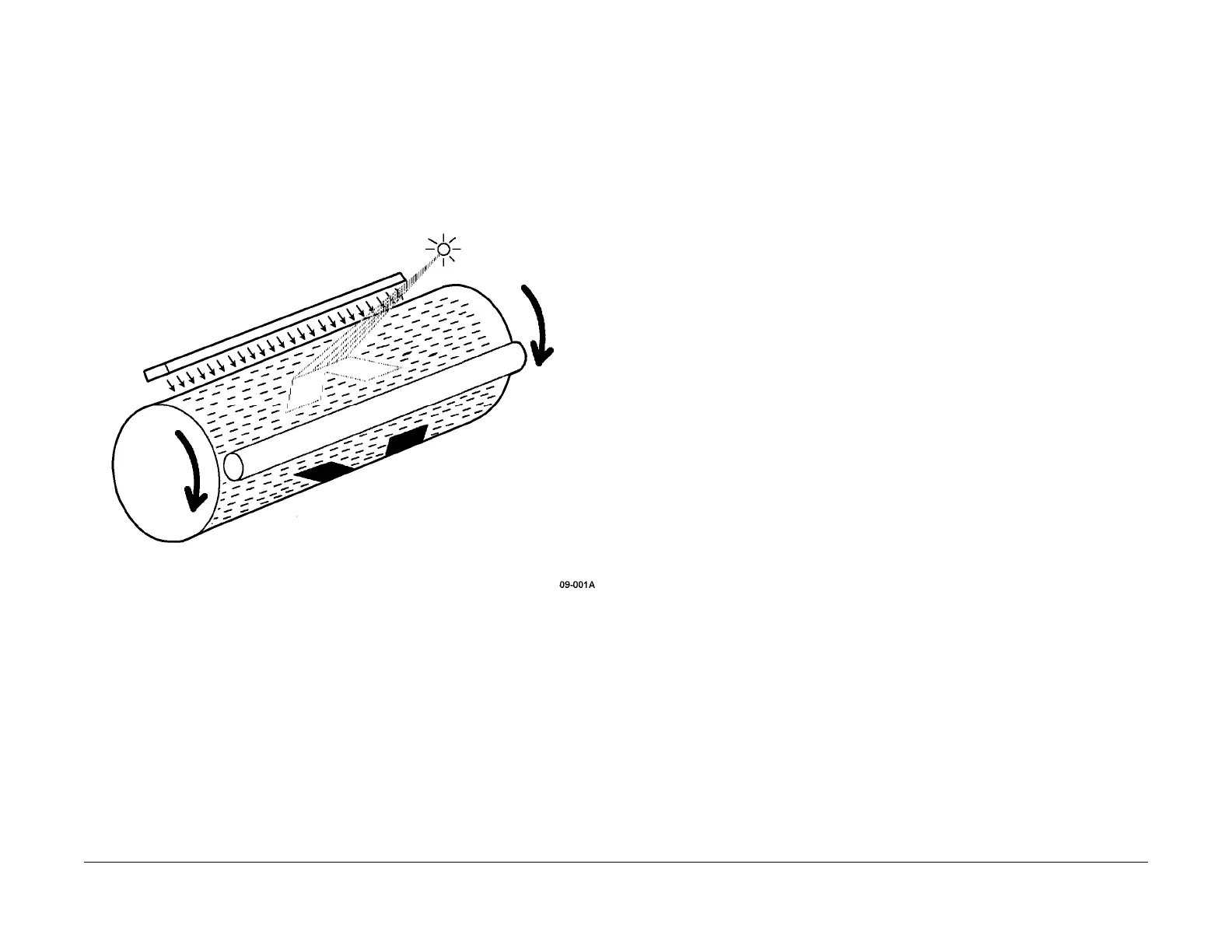